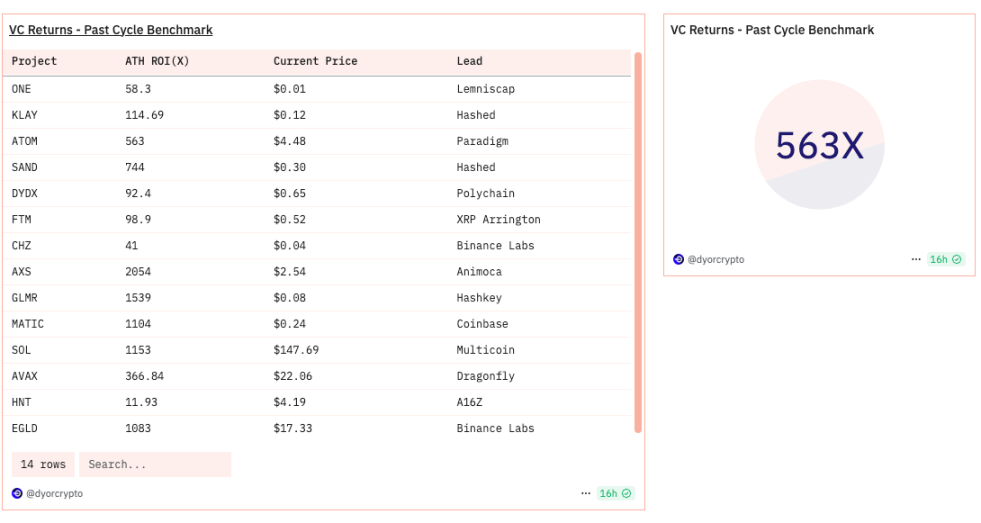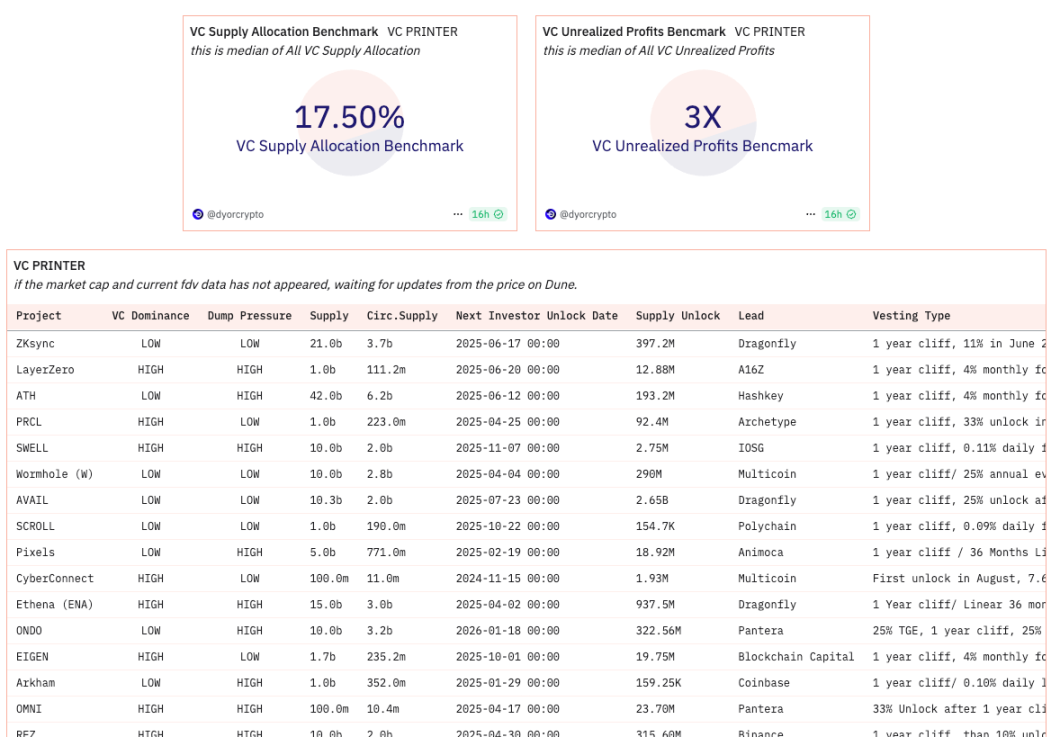Under liquidity tightening, the triangle relationship between VC, project and exchange is imbalanced

Reprinted from panewslab
04/28/2025·16DAuthor: ChandlerZ, Foresight News
In a recent Space, Dashan, a partner of Shuidi Capital, admitted that all four projects he invested in have been launched on Binance recently, but none of them issued coins to investors in accordance with the original investment agreement. Although the contract states the terms of issuing coins in black and white, the agreement can be modified at will after the project is launched, and investors can hardly take any effective countermeasures.
It said that changing the agreement is not actually the wish of the project party, but Binance has always been unwritten by the project party, so it does not blame the project party, because they are also weak in front of Binance. The current strategy is very clear, which is to persuade and help truly high-quality projects not to issue coins, go directly to the market, and change to a relatively clean and regulated market to reflect their value.
Contract-based rights protection in traditional VC investment does not have the same practical binding force in the crypto token investment structure. Since the circulation rules after the token is launched are dominated by the exchange, and the distribution of on-chain assets is not subject to the immediate constraints of the traditional legal system, investment agreements often lose their execution at key nodes. In the current market environment, whether a project can obtain access to a leading exchange is directly related to overall survival, and the importance of the terms of the agreement is marginalized in the face of actual interests. In order to go online, the project party had to cooperate with the exchange's redesign of the release rhythm, locking the position rules, token ratio, etc., while investors fell into a de facto rights weakness in the absence of on-chain governance rights and circulation voice.
This statement reveals a deep crisis that the current crypto VC investment system is facing, that is, a dilemma about the effectiveness of contracts, liquidity control and exit mechanisms.
Power balance tilt: the new relationship between VC, project and exchange
In the past few years of industry development, the model with the main line of "project narrative construction - multiple rounds of VC financing - top exchange token generation event (TGE)/listing" has gradually become the mainstream. The feature of this model is that the project relies on the capital injection, resource docking and reputation endorsement of professional VC institutions in the early stage, and completes financing through gradual valuation. The ultimate goal is usually to realize the initial issuance and circulation of tokens in large centralized exchanges, providing exit channels for early investors.
In previous multiple bull markets, crypto VC, as a core resource, has mastered the power of initial financing and coin issuance design, and this process has played an important role in promoting rapid industry expansion and project incubation. In the last bull market, the project's status has improved, but VCs are still dominated by large capital and liquidity empowerment such as Launchpad.
However, as the market enters a new adjustment cycle, the liquidity of the counterfeits is exhausted, and the interest structure between investors and project parties changes accordingly. The exchange's power has risen unprecedentedly, becoming the absolute controller of liquidity switches. Key links such as online approval, token allocation, and circulation strategies are concentrated in the hands of the exchange, leaving the project party in an extremely weak position in negotiations. Even if a detailed investment agreement was signed, the project party could not refuse the adjustment of circulation conditions proposed by the exchange, and ultimately had to violate the original agreement with the investors.
Exchanges have become the controller of scarce resources, VCs have gradually been marginalized, and their actual control capabilities have been greatly reduced.
The "Prisoner's Dilemma" under liquidity tightening
The current difficulties faced by "VC coins" are not caused by a single factor.
After multiple rounds of financing, the open market valuation of the project when it is TGE is often at a high level. This directly leads to the high initial buying cost of secondary market investors, and also means that early investors, including VCs, teams, early supporters, etc., hold a large number of low-cost chips, and have a strong potential selling motivation.
This expectation difference causes the token to face natural selling pressure after it goes online, and market participants may form a consensus that "selling is the best strategy", which triggers a negative feedback loop.
Further, the token economy itself is also exacerbating the dilemma of VC coins.
During the bull market, the token issuance model of a large number of projects follows the high expected growth assumptions during the bull market. For example, the market value is rising all the way, and liquidity is sufficient to support it to gradually unlock it. However, in actual operation, many projects lack real income support. DeFi's annualized income depends on Ponzi, GameFi depends on subsidies, and NFT depends on FOMO. The tokens completely lose their endogenous growth momentum.
The most important thing is that the tokens invested by VCs in the past can eventually be sold to new retail investors in the secondary market, forming a complete escape path. However, at present, there are very few new retail investors on the chain and exchanges, and incremental funds are exhausted, and VCs have become the norm to smash each other.
In essence, early investors, project parties, market makers, and early users have become a zero-sum game within a closed loop, and it is becoming increasingly difficult to exit.

VC returns in the previous bull market cycle

VC returns for this cycle
For VC institutions, the traditional strategy of relying on fast TGE to achieve high multiple exits faces challenges, and the implementation cycle of return on investment may be extended and uncertainty increases. This may prompt VCs to pay more attention to the long-term fundamentals of projects, sustainable business models, reasonable valuations and healthier token economic models when making investment decisions. Its role positioning may also need to extend from focusing on early investment and promoting listing to deeper post-investment management, strategic empowerment and ecological construction.
For project parties, their token issuance strategies and community relations need to be reviewed. After the model of holding high and playing high is questioned, lower valuations start, more fair issuance mechanisms, designing token economics that can better incentivize long-term holders, and improving operational transparency and strengthening accountability may be more worth exploring.
From a more macro perspective of industry development, the current challenges can be regarded as an adjustment in the process of market maturity. It exposes the problems accumulated in the past rapid development and may promote the formation of a more balanced and sustainable financing and development ecosystem. This requires all market participants, including VCs, project parties, exchanges, investors and even regulators to adapt to changes and seek to establish a new balance between innovation incentives and risk control, efficiency and equity.

